An important part of the plant is the peduncle of the orchid, it is responsible for the beauty and bloom of the flower. Buds are formed 50-60 days after the formation of the flower branch. An orchid flower stalk appears during the period of the active phase of plant development. Her appearance is a real holiday, because flowering will last more than one month. Sometimes you have to wait a long time for the formation of a flower arrow.
Content
- 1 What is a flower stalk in phalaenopsis
- 2 How to care for an orchid
- 3 When and how is formed
- 4 Instructions on how to get an even escape
- 5 What to do so that the arrow does not freeze in development
- 6 What to do to make an orchid produce several peduncles at the same time
- 7 Possible problems
- 8 Actions after flowering
What is a flower stalk in phalaenopsis
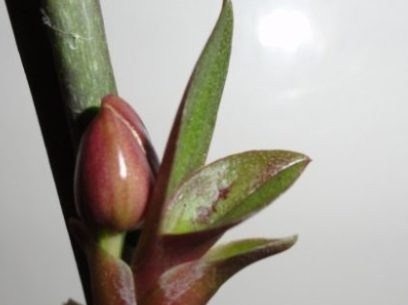
The long and flexible stem on which the flowers form is called a peduncle. On one flower branch can be from 10 to 50 buds. It is confused with children or the roots of orchids. If the previous stem was cut to a sleeping bud, and not to the base, then in the fall this bud releases an arrow on which flowers will bloom in 1.5 months.
Where does the peduncle grow
Throughout life, the flower stalk changes. It is old and new. The young peduncle, which appeared from the axils of the leaves, grows upward or sideways, turned to the light, it is flat in shape with a pointed end. The branch has a green color. There are scales on the stem, it is actively growing, becoming long and flexible, it is easy to break, since it is very fragile. Usually the branches are tied to a support and try not to touch them.
After flowering, the stem changes color from green to yellow or brown. Sometimes the branches turn purple or red, it all depends on the plant variety. After changing the color, the flower stalks dry out and fall off. It is better to prune the stem until it is completely dry, because it takes power from the plant.
How to distinguish a peduncle from an orchid root
At first, a young shoot can not always be distinguished from a baby or a root, it is not clear whether it is a root or a peduncle on an orchid. In order not to confuse the stem with other parts of the plant, they are guided by some signs. A peduncle grows near an orchid from the leaf sinus, and a baby similar to an shoot may appear next to the peduncle.
How to distinguish root from peduncle or baby
| Flower shoot | Roots | Baby |
|
An orchid releases a peduncle from the sinus of a leaf, often in a young leaf |
It grows outside from the neck of an orchid, may appear from the middle of the leaf |
Grows near the vein of a leaf, in the place of a flower branch, can form on the roots, on the peduncle |
|
The end of the stem is pointed, has a conical stepped shape |
Bright tip, light velamen |
The tip looks like a beak |
|
Conical shape, flake surface |
The root is round, smooth |
Miniature copy of an adult plant |
|
The escape itself is flattened |
Cone-shaped kidney |
A process with 2-3 leaves; small roots extend from the attachment point |
|
Phalaenopsis flower stalk grows up, sometimes to the side |
Direction down, but air roots can grow sideways and up |
Reaching up |
It is impossible to distinguish the peduncle from the root in phalaenopsis or baby at the beginning of growth. It will be possible to determine by the shape of the tip with time, when the shoot will be at least 4 cm. The flower stalk, baby or root differ in sleeping buds in the form of scales on an arrow.
How to care for an orchid
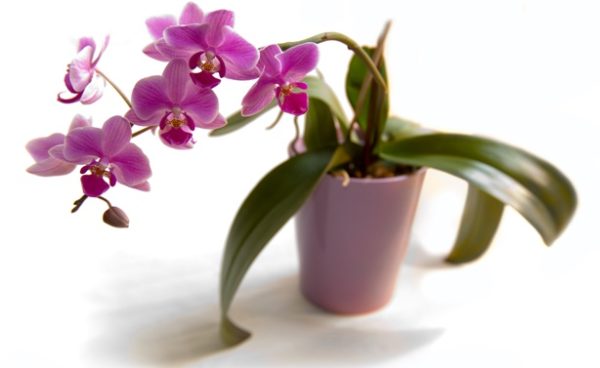
The dormant period of the orchid ends in autumn.Sufficient illumination, top dressing and regular watering are the main principles of caring for a flower. Comprehensive care will allow you to get the long-awaited peduncle in a short time. Access to fresh air is mandatory, drafts should not be allowed. Humidity in the house is 60-70%.
Reduced watering
Phalaenopsis orchid is hygrophilous. In winter, due to radiators and batteries, and in summer due to the scorching sun in the apartment, the air becomes dry. Do not allow the drying of the substrate, need to waterwhen the soil becomes slightly wet.
When the orchid released the flower stalk, watering is gradually reduced, spraying directed at the plant is not desirable, this can ruin the new shoot. Between watering, the planting mixture should dry for at least 5 days, a break gives the root system time for photosynthesis. If the flower was watered 1-2 times a week before the stem was formed, now the orchid needs to be watered 3-4 times a month.
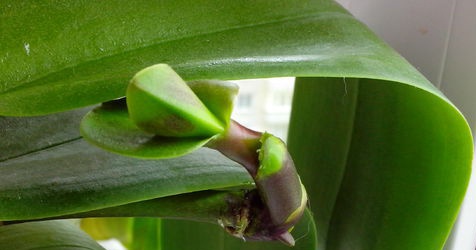 You may be interested in:
You may be interested in:Features of feeding
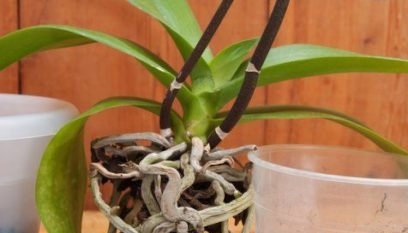
The laying and development of a flower shoot, further budding depends on timely top dressing. Mineral supplements with phosphorus and potassium are introduced. Fertilize the flowers once a month in accordance with the instructions. During the period of growth of the peduncle and during flowering, the plants stop fertilizing. Any top dressing reduces the time of orchid budding.
Lighting and temperature
When the orchid released the arrow in winter, the plant is transferred to the southern part of the house, it is advisable to put it near a bright window. If there is insufficient lighting (cloudy days, a short day) then install fluorescent lamps. The light for the southern beauty should be at least 10-12 hours a day. Its lack will affect the peduncle - the shoot may not form at all.
The temperature of the room is 22-25 degrees. At night, the thermometer scale should not fall below + 16 * C. With a significant cooling, the stem will begin to dry out, there is no question of the appearance of a new shoot.
When and how is formed
The peduncle of the orchid grows within 50-70 days. Hybrid varieties will need 90-100 days to form the stem. This period begins with the appearance of the shoot and ends with a formed peduncle with buds.
If the room is warm, increased humidity, and a lot of light, the formation of an arrow increases by 2 times. At the beginning of growth, it is not always possible to distinguish a flower-bearing stem from a root or a baby, but as it develops, it acquires distinct signs.
Instructions on how to get an even escape
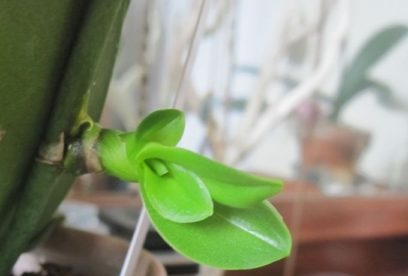
After making sure that it is the flower stalk that develops, it must be tied up in an upright position in order to grow the flower stalk even and high. Recommendations will help to make the appendage even, high, and prevent a branch fracture.
Instructions for the orchid to give a straight arrow:
- in a container with phalaenopsis establish a support for the growing peduncle;
- Strengthened and grown arrow 16-18 cm long is fixed vertically to the support, use a special clothespin for flowers;
- if the stem deviates to the side, and it is not tied, then it is necessary to turn the pot with a flower branch to the light, it will gradually align.
What to do so that the arrow does not freeze in development
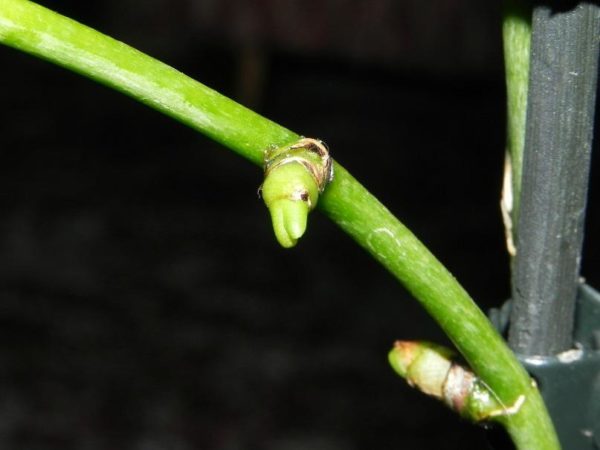
It's all about proper care. Lighting should be diffuse. It is better to shade the window with something, so that direct rays do not burn the trunk and leaves of the orchid. You can hang tulle, blinds, outdoor tents over window openings. With prolonged rains, when it is cloudy for several days in a row, you need backlight.
It is watered as the soil dries, but the substrate must not be allowed to completely dry.The temperature is maintained as in the tropics of 25 degrees, you need high humidity. It can be achieved by spraying the room, put containers with water or install a humidifier. A temperature above 30 degrees dries the air, the flower dries and can die.
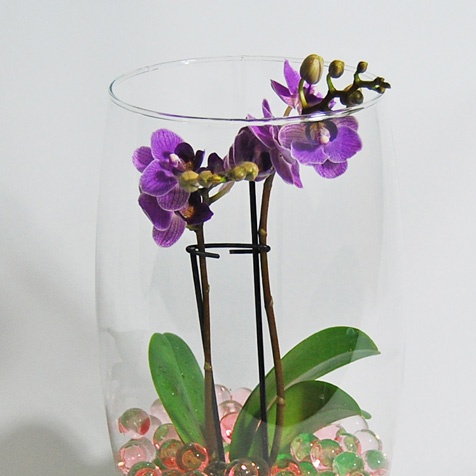 You may be interested in:
You may be interested in:What to do to make an orchid produce several peduncles at the same time
At the same time, a flower can form 2-3 peduncles. Young growth often has one stalk, and even if you try, it will in no way give more branches. Three stems can appear in an adult plant, which has 9-10 leaves in the outlet and in some varieties of orchids that can produce 4-6 arrows simultaneously.
For any orchid, flower stalks in an amount of three or more at once are a great depletion and shock. Strength goes to the formation of stems, the appearance of buds and the blooming of beautiful flowers. After abundant flowering, peace of the flower and good care are necessary.
Possible problems
There are cases when the flower stalk grows for a long time, it develops incorrectly or is completely absent. How to solve the problem, what measures to take in such cases?
Emergence from a growth point
In mature or already in old plants, after numerous blossoms, a flower branch can grow from a growth point. In young animals, this phenomenon is a consequence of stress.
In this case, nothing needs to be done. You should wait until the flower adapts after stress, you just have to watch and take care of it in time. Such an arrow can still form buds and bloom for a long time.
Flower arrow broke
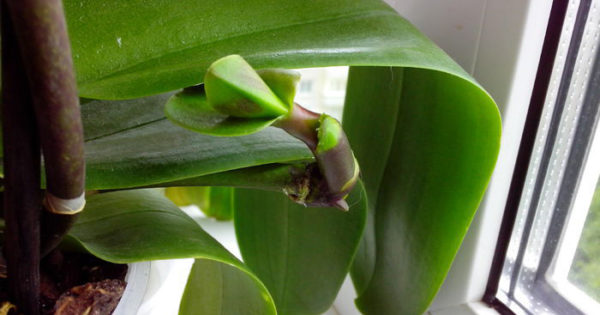
If the stem accidentally touched, and it broke, you do not need to be upset. A flower shoot is cut off next to the nearest kidney at the fracture site. The cut is treated with cinnamon or charcoal. Soon, a young shoot is formed from the kidney.
There is no stalk at all
If the flower is “lazy" and has not thrown an arrow for a long time, then you can rush it with a run pasture. A light shake will help make the phalaenopsis fire an arrow. Florists provoke the appearance of a peduncle in an orchid resting for more than a year.
Actions:
- move the orchid to a shaded place;
- reduce the amount of watering, but prevent drought;
- at night lower the air temperature by 5 degrees, open the window briefly, but without drafts;
- the shake is carried out for about a week, then the pot is placed in the usual setting for a flower.
Stopped developing
It happens that the arrow has grown, released several buds, and then stopped growing and new buds do not appear. Why did this happen and what to do in this situation.
What to do:
- inspect the plant, make sure that there is no disease, rot, insects;
- Is everything enough for a beauty - light, watering, humidity, fertilizers;
- if after treatment the stem did not begin to grow, then we must wait until the phalaenopsis wakes up and continues to grow.
Actions after flowering
If the flower stalk is yellowed or dried, then it is cut off at the very base. Make it a sterile secateurs. The section is sprinkled with chalk, cinnamon or charcoal.
When part of the branch has dried, it is cut to the first nearest kidney. Soon a lateral shoot will begin to grow from it, a new peduncle will appear.
If the flower arrow is completely green, there are buds on it, then it is quite possible they will soon wake up. Buds will form on the branch and flowers will blossom. In this case, you need to wait until the plant wakes up and blooms.
If the orchid in the house settles for the first time, then it is better to choose a picky species - phalaenopsis. In the process of care and development, you can understand what a flower needs when it needs help. To find out which of the processes of peduncles or children. Which places in the house are more like the orchid, and in others it is better not to put it. Then there will be a desire to acquire an exotic specimen in order to see the appearance of a peduncle and the blooming of unusual flowers that will delight you with flowering more than once a year.

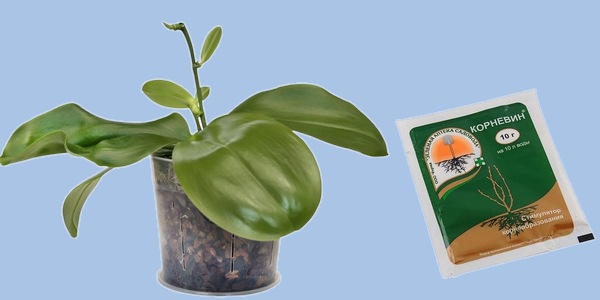
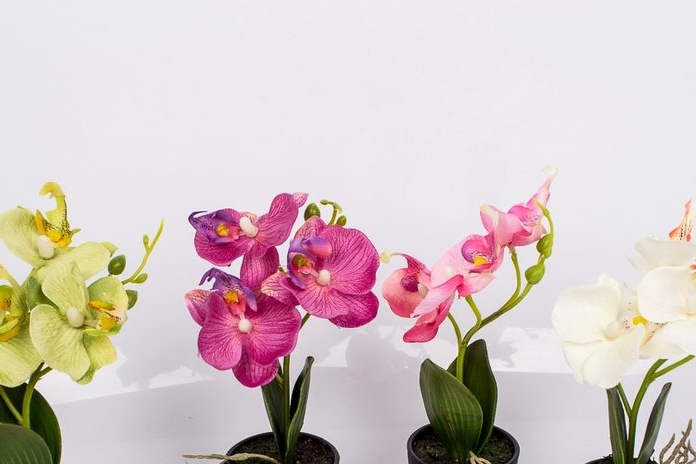
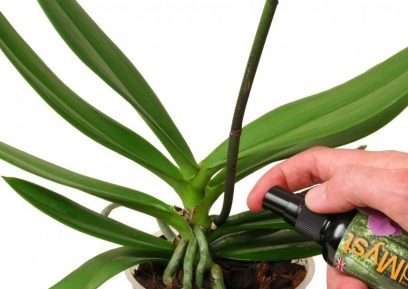
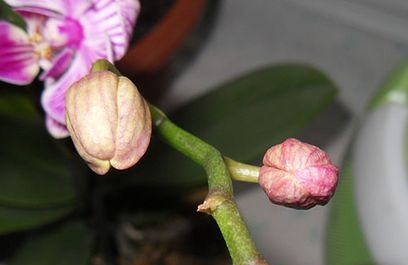 Reasons why orchids fall flowers and what to do
Reasons why orchids fall flowers and what to do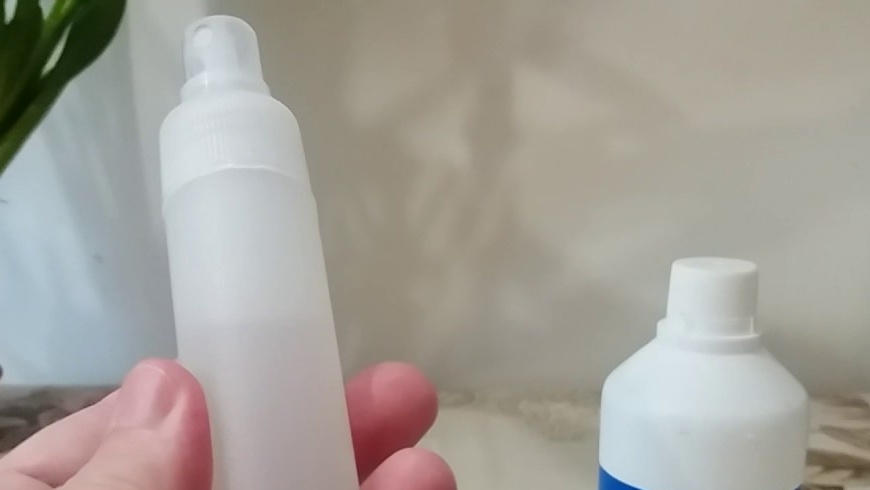 How to use hydrogen peroxide for orchids and why
How to use hydrogen peroxide for orchids and why Midges are wound up in the orchid: effective ways to get rid
Midges are wound up in the orchid: effective ways to get rid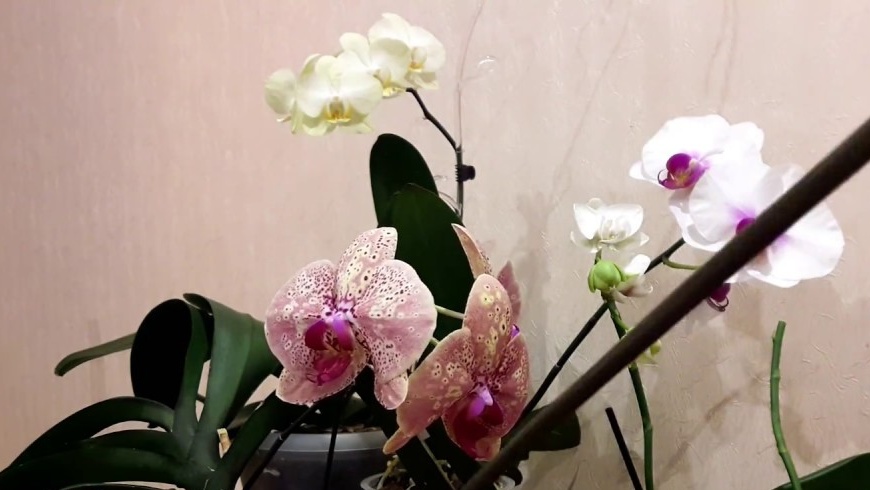 Is it possible to transplant an orchid during flowering
Is it possible to transplant an orchid during flowering